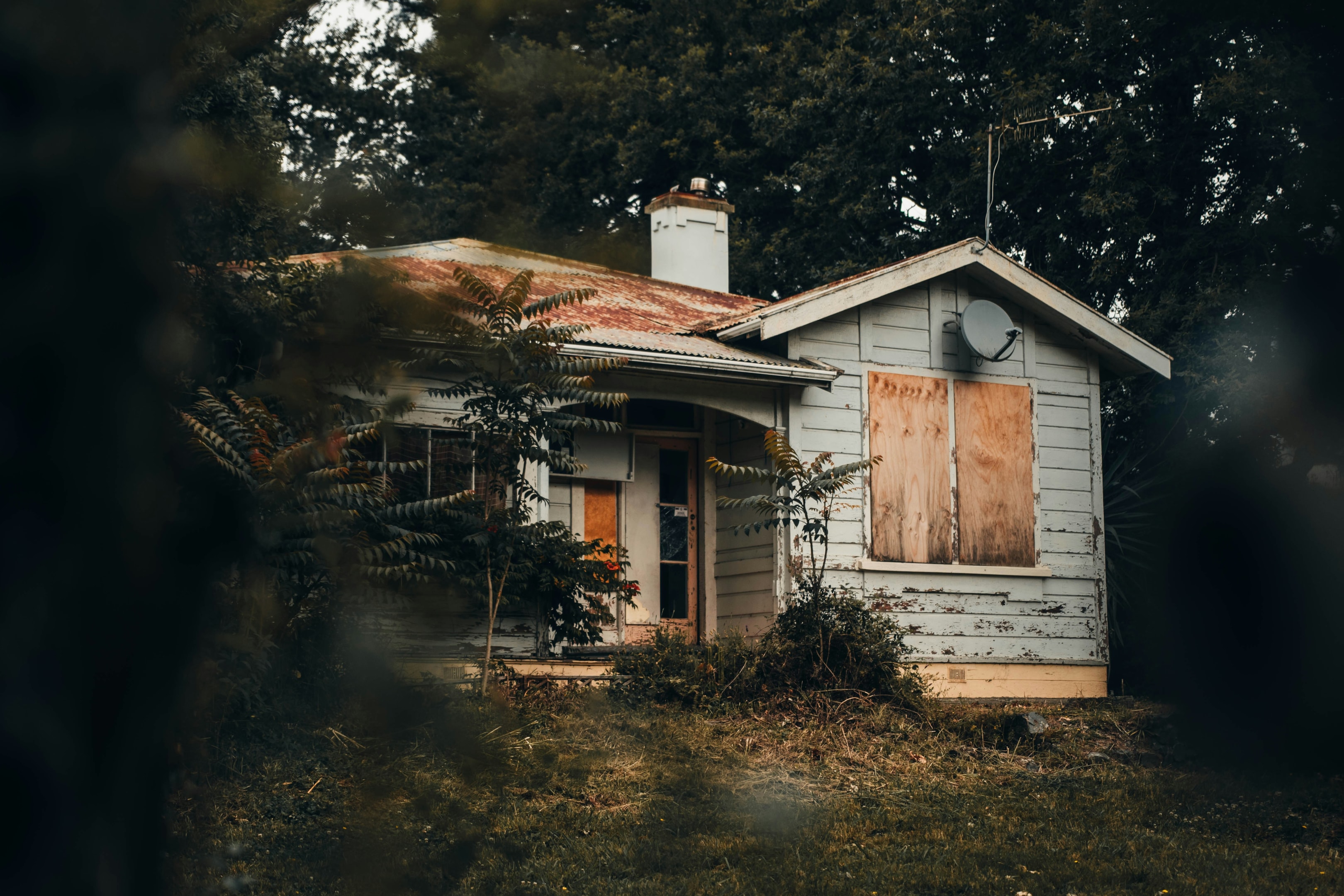Mastering the Art of Turning Vacant Homes into Rental Properties
Introduction
If you've ever driven past an empty house with overgrown grass, peeling paint, and a "For Sale by Owner" sign that's been there for months, you've seen an opportunity in disguise. Vacant homes are more than eyesores—they're potential cash-flow machines waiting to be transformed into profitable rental properties. Many investors chase after the same MLS listings or overbid on foreclosures, but the investors who consistently win big target under-the-radar opportunities—and vacant homes are one of the most overlooked. In this guide, we'll break down how to find vacant homes, evaluate them for rental potential, secure financing, renovate strategically, and manage them for long-term wealth building.

Why Vacant Homes Are an Untapped Opportunity
Vacant homes are often a drain on their current owners—racking up taxes, maintenance costs, and sometimes even fines from code enforcement. In many cases, the owners are eager to sell quickly just to stop the financial bleeding. To learn more about investing in vacant homes, see The Ultimate Guide to Vacant Property Leads: A Hidden Goldmine for Real Estate Investors.
For real estate investors, that creates three major advantages:
Less competition – Fewer buyers are pursuing these properties.
Motivated sellers – Owners often want a fast, hassle-free exit.
Bargain pricing – Properties may sell well below market value.
Understanding the Causes of Vacancy
Knowing why a home is vacant can help you tailor your offer and renovation plan. Common causes include:
Inheritance without a plan – Probate homes that sit empty for months.
Relocation – Owners move for work or family reasons.
Tenant turnover – Rental properties sitting unfilled due to repairs or management issues.
Foreclosure – Owners move out before the bank officially takes possession.
Deferred maintenance – Properties in disrepair become unlivable.
Each cause comes with its own timeline, motivation level, and negotiation potential.
Benefits of Turning Vacant Homes into Rentals
Steady, Predictable Cash Flow
One of the biggest advantages of turning vacant homes into rental properties is the steady, predictable cash flow they generate. Monthly rental income can reliably cover your mortgage payments, property taxes, landlord insurance policy, and maintenance costs, while still producing a profit. This steady stream of extra income helps rental property owners build wealth over time and provides a buffer against market fluctuations. By collecting rent consistently from reliable tenants, you ensure a smart financial move that supports your long-term investment goals.
Equity Growth Over Time
Another key benefit is equity growth. As tenants pay rent each month, they effectively contribute to paying down your mortgage loan, increasing your ownership stake in the property. Meanwhile, the property itself may appreciate in value due to favorable real estate markets or improvements you make. This dual effect—loan principal reduction plus property appreciation—builds your net worth steadily. Turning a vacant rental property into a well-maintained rental home allows you to take advantage of both cash flow and equity gains, making it a powerful investment strategy.
Tax Savings
Rental properties offer significant tax advantages that can reduce your overall tax burden. As a property owner, you can claim tax deductions on mortgage interest, property taxes, landlord insurance, repairs, property management fees, and depreciation. These tax implications make owning rental property more financially efficient by offsetting taxable rental income. Working with a knowledgeable tax advisor ensures you take full advantage of available deductions and comply with local regulations, making the conversion process smoother and more profitable.
Portfolio Diversification
Finally, turning vacant homes into rental properties helps diversify your investment portfolio beyond traditional stocks and bonds. Rental real estate provides a tangible asset that generates passive income, even during market downturns. This diversification reduces overall investment risk and offers a hedge against inflation. By successfully converting a primary residence or vacant property into a rental, you gain exposure to different real estate markets and income streams, strengthening your financial position and building long-term wealth. For more tips on expanding your portfolio in real estate, see Essential Steps to Craft a Successful Real Estate Investment Portfolio.

Finding Vacant Homes
1. Public Records & Utility Shutoff Lists
Some municipalities make water, gas, or electricity shutoff records public. These lists can be a goldmine of motivated sellers. For guidance on how to access these public records, refer to Using Public Records to Find Probate Properties: A Step-by-Step Guide.
2. Driving for Dollars
Cruise neighborhoods and look for signs of vacancy—unmowed lawns, uncollected mail, boarded windows, or "no trespassing" signs. To learn more about adding this tried and true method to your lead generation, read Driving for Dollars: The Ultimate Guide to Finding Off-Market Real Estate Leads.
3. Networking with Wholesalers
Wholesalers often have leads on vacant homes that aren't widely marketed.
4. Online Lead Platforms
Tools like DealMachine and BatchLeads let you filter properties marked vacant by USPS records.
5. Local Government Lists
Some cities track vacant property registrations and make them available online.
Evaluating a Vacant Home for Rental Potential
Neighborhood Analysis
Research crime rates, school ratings, job growth, and access to amenities such as parks, shopping centers, and public transportation. A neighborhood with a strong community and good infrastructure tends to attract long-term tenants who value safety and convenience, making your rental property more desirable and easier to lease.
Property Condition
Vacancy often leads to neglect, which can cause damage from leaks, pests, vandalism, or general wear and tear. It's essential to get a thorough professional inspection to identify any existing issues and potential safety hazards. Addressing necessary repairs early on will help ensure the property is in good shape and appealing to prospective tenants.
Rental Demand
Use tools like Rentometer, Zillow, or consult with local property managers to analyze current market rent levels and vacancy rates. Understanding rental demand in the area helps you set competitive rental prices and anticipate how quickly you can attract good tenants, minimizing lost rental income.
Projected Cash Flow
Calculate your expected monthly rental income and subtract all associated expenses—including mortgage payments, property taxes, landlord insurance, maintenance costs, and reserves for vacancy or unexpected repairs. Ensuring positive cash flow is critical to making the investment property profitable and sustainable over the long term.

Calculating the Numbers
Smart investors run the math before signing the contract to ensure the investment aligns with their financial goals and risk tolerance.
Acquisition Costs
Purchase price, closing costs, and any wholesaler assignment fees should be carefully tallied to understand the total upfront capital required.
Renovation Budget
Labor, materials, permits, plus a contingency (10–15% of the budget) must be included to cover unexpected expenses during the rehab process.
Ongoing Expenses
Management fees, insurance, property taxes, maintenance, and vacancy reserves are recurring costs that impact your monthly cash flow and overall profitability.
ROI Targets
Most seasoned investors aim for 8–12% cash-on-cash return or higher, balancing attractive returns with manageable risk to build sustainable wealth.
Financing Strategies for Converting Vacant Homes
Conventional mortgages are best suited for move-in-ready properties with strong borrower credit, while hard money loans offer short-term financing for heavy rehabs, typically with higher interest rates but faster approval. Private money lending involves borrowing from individuals, often other investors, in exchange for interest or equity, and seller financing occurs when the seller acts as the bank, which can be useful for properties that don't qualify for traditional loans. To learn more about creative financing options that are available to you, see Creative Financing for Real Estate Investors: Top Tips to Save Money.

Renovating for Renters
Meet All Safety and Code Requirements
Install smoke detectors, fix railings, and address wiring or plumbing hazards to ensure the property complies with all local laws and safety codes, creating a secure environment for tenants.
Choose Durable, Low-Maintenance Materials
Vinyl plank flooring, solid-surface counters, and quality fixtures reduce repair calls and maintenance requests, helping you keep ongoing costs low while enhancing tenant satisfaction.
Design with Tenants in Mind
Young professionals may want modern finishes, while families might value extra storage and fenced yards, so tailoring renovations to your target tenant demographic can improve occupancy rates and attract good tenants.
Property Management Options
Self-Management
Maximizes profit but requires time and hands-on involvement. This approach demands strong organizational skills and a willingness to handle all tenant communications and maintenance issues personally.
Professional Management
A property manager typically takes 8–12% of rent but handles marketing, tenant screening, and maintenance. Hiring a professional can save you time and reduce stress by ensuring expert handling of day-to-day operations and legal compliance.
Hybrid Approach
Manage tenant communication yourself while outsourcing maintenance. This method offers a balance between control and convenience, allowing you to stay involved without becoming overwhelmed by repairs and upkeep.
Marketing Your Rental Property
Online Listings
Post on Zillow, Apartments.com, Facebook Marketplace, and local real estate forums.
Local Outreach
Advertise on community boards, through local employers, and with nearby colleges.
Referral Programs
Offer existing tenants incentives to refer friends or family.
Screening Tenants
Protect your investment with thorough tenant screening, including credit, background, and rental history checks. Look for stable income and strong references.
Common Mistakes to Avoid
Underestimating repair costs.
Over-renovating beyond neighborhood standards.
Skipping tenant screening.
Ignoring local rental regulations.

Conclusion
Vacant homes are more than empty buildings—they're wealth-building opportunities in waiting. With the right acquisition strategy, thorough due diligence, smart renovations, and effective management, you can turn an idle property into a reliable income stream that grows in value year after year. By carefully evaluating each property's potential, addressing necessary repairs promptly, and screening tenants diligently, you ensure a smooth transition from vacancy to profitability. This step-by-step approach allows you to maximize rental value, minimize downtime, and build long-term equity through consistent rental income and property appreciation.